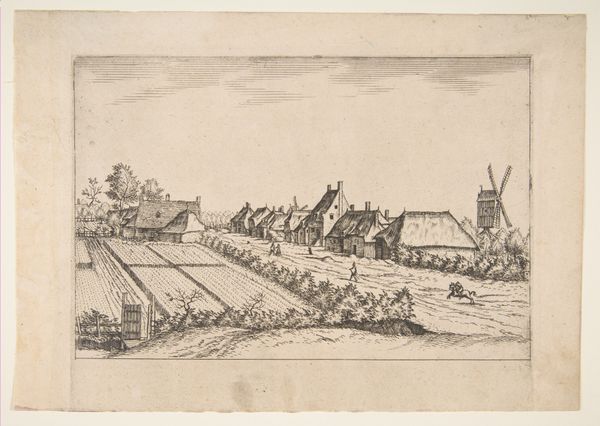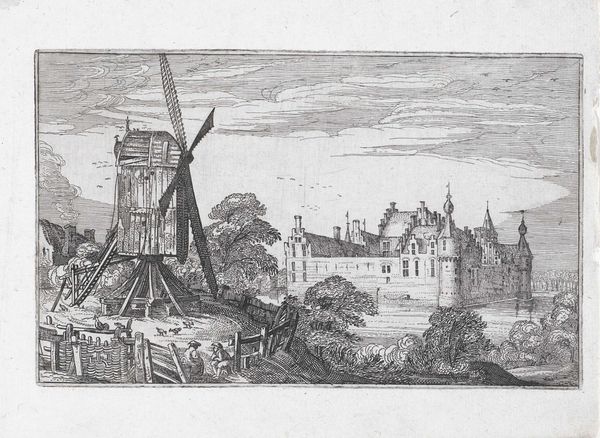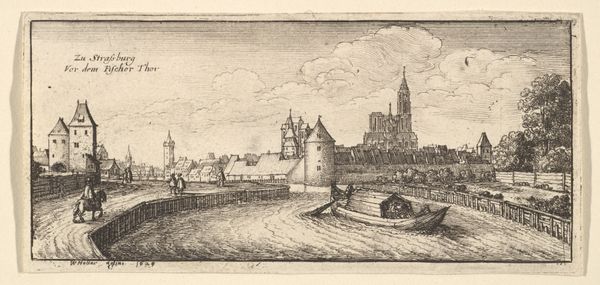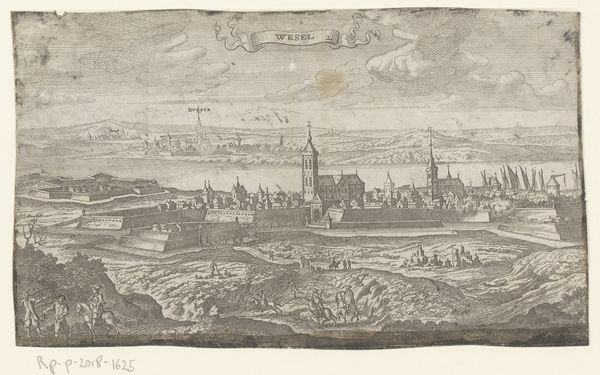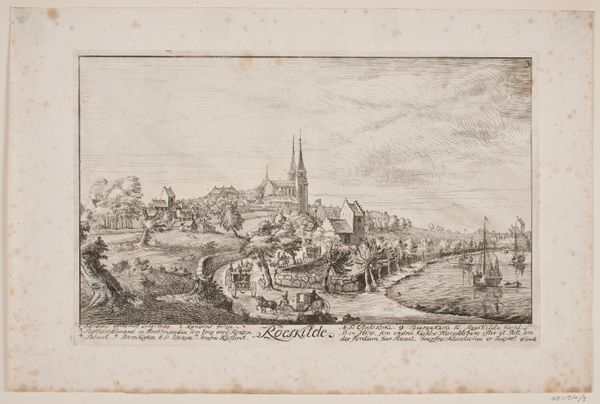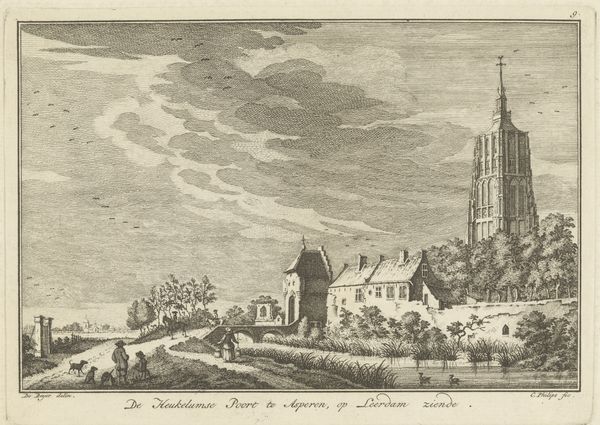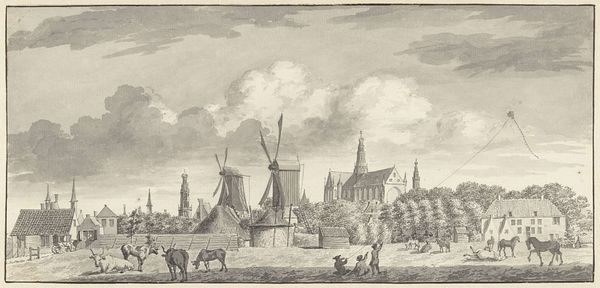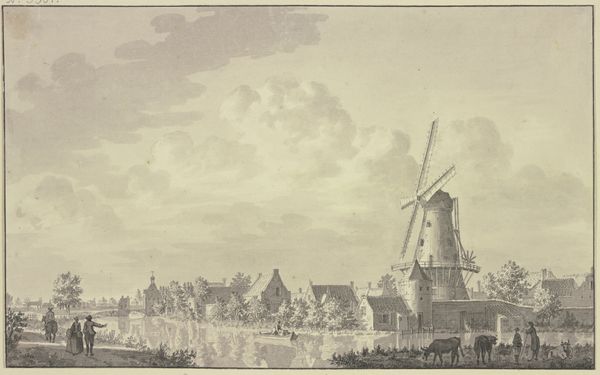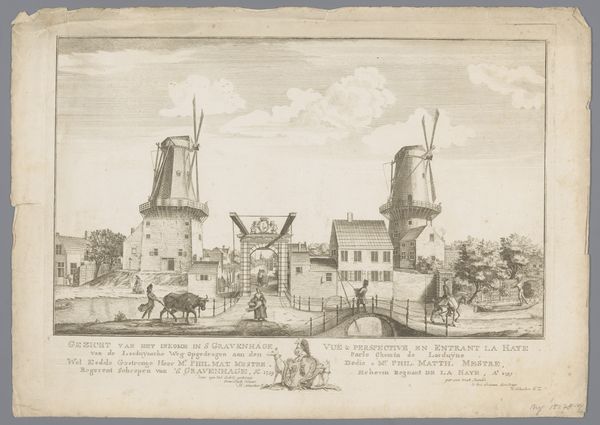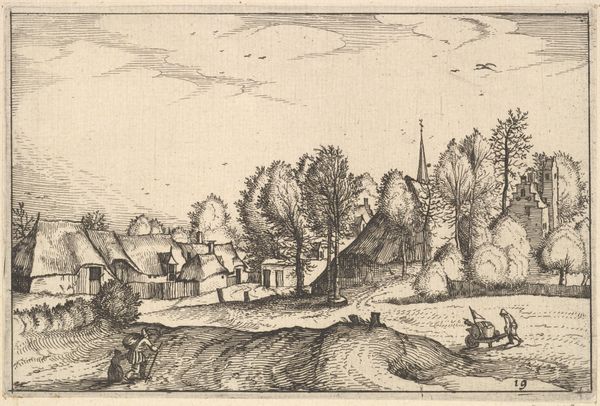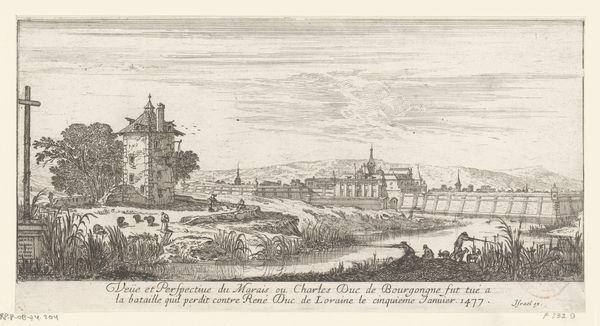
drawing, print, etching, engraving
#
drawing
#
baroque
# print
#
etching
#
landscape
#
cityscape
#
engraving
Dimensions: Sheet: 3 1/4 in. × 5 in. (8.3 × 12.7 cm) Trimmed on and just outside platemark
Copyright: Public Domain
Editor: This is "z\u00fc C\u00f6lln (Cologne)," an etching by Wenceslaus Hollar from 1643. I find the contrast between the towering aqueduct and the simple windmill quite striking. What do you see in this cityscape? Curator: I see a powerful commentary on the shifting power structures of 17th-century Cologne. The aqueduct, a relic of Roman infrastructure, represents the established order, the Catholic Church, the historical trade routes and wealth, and its looming presence over the landscape. Editor: That's fascinating, I hadn't thought about it that way. What about the windmill, then? Curator: The windmill, juxtaposed against it, symbolizes the burgeoning merchant class and new economic models based around agriculture and regional commerce that increasingly began to reshape not only physical landscapes, but trade networks that bypassed traditional established trading partners of old, slowly altering access to available forms of labour as well. It whispers of Protestantism, challenges to traditional power, and a move towards local autonomy in how urban centres structured local and foreign commerce and trade. Editor: So, Hollar isn’t just depicting a city, he’s highlighting a power struggle? Curator: Exactly. The detailed rendering also encourages us to consider the position of the ordinary citizen within these structures. Note the size and perspective; we're situated outside the main structures, as if witnessing history unfold from the margins. Whose Cologne is it? The established power? Or the emerging class that works within it, in its own shadow, quite literally? Editor: That’s a completely different perspective than I had before. I was focused on the aesthetics of the city itself, the physical depiction! Curator: And there’s beauty in that perspective, too! But art often holds layers waiting to be uncovered by simply acknowledging art within its social contexts and history. We all learn and contribute with distinct interpretations. Editor: I see that now! Thanks for opening my eyes to the socio-political elements embedded in this image.
Comments
No comments
Be the first to comment and join the conversation on the ultimate creative platform.
